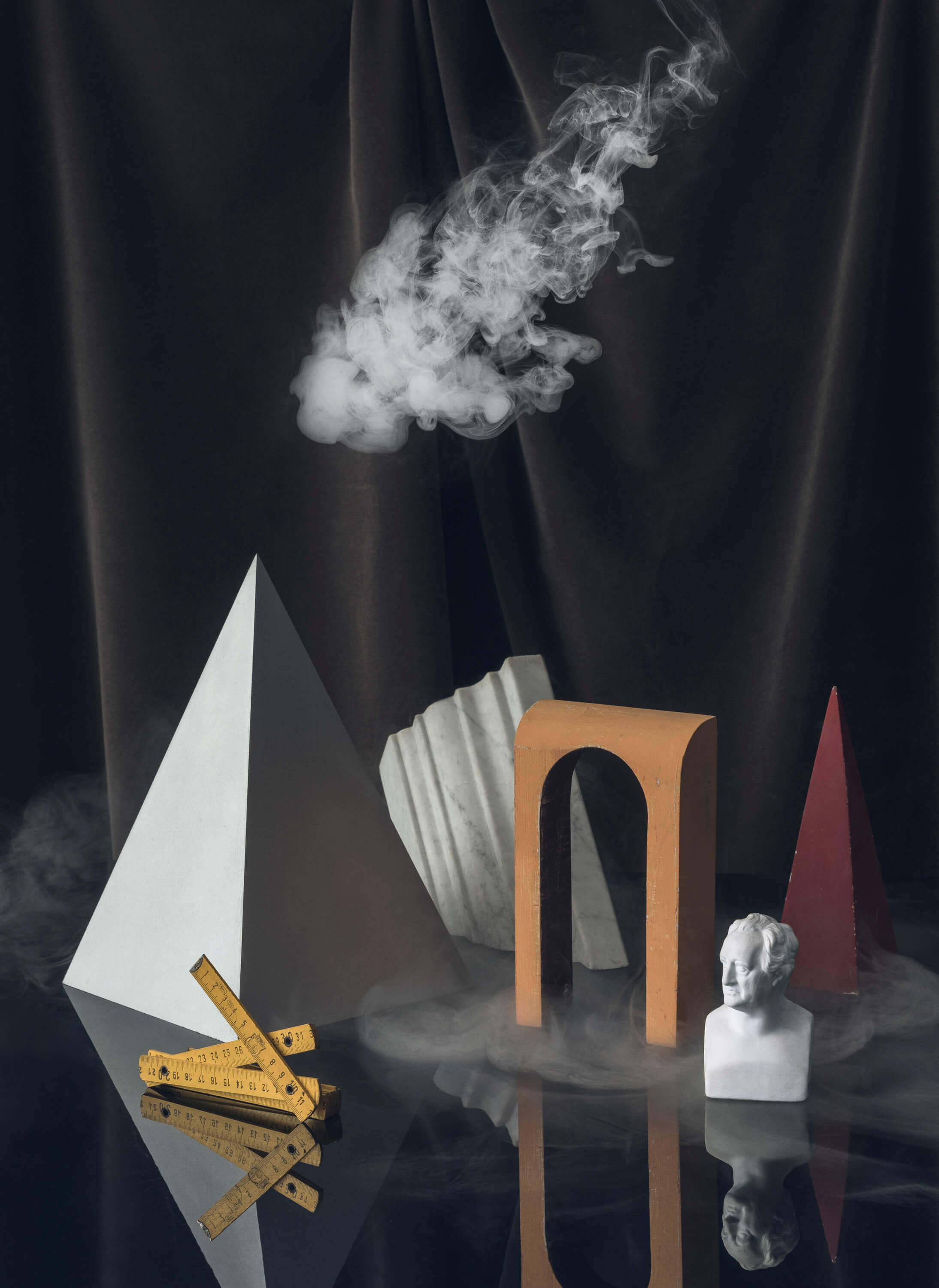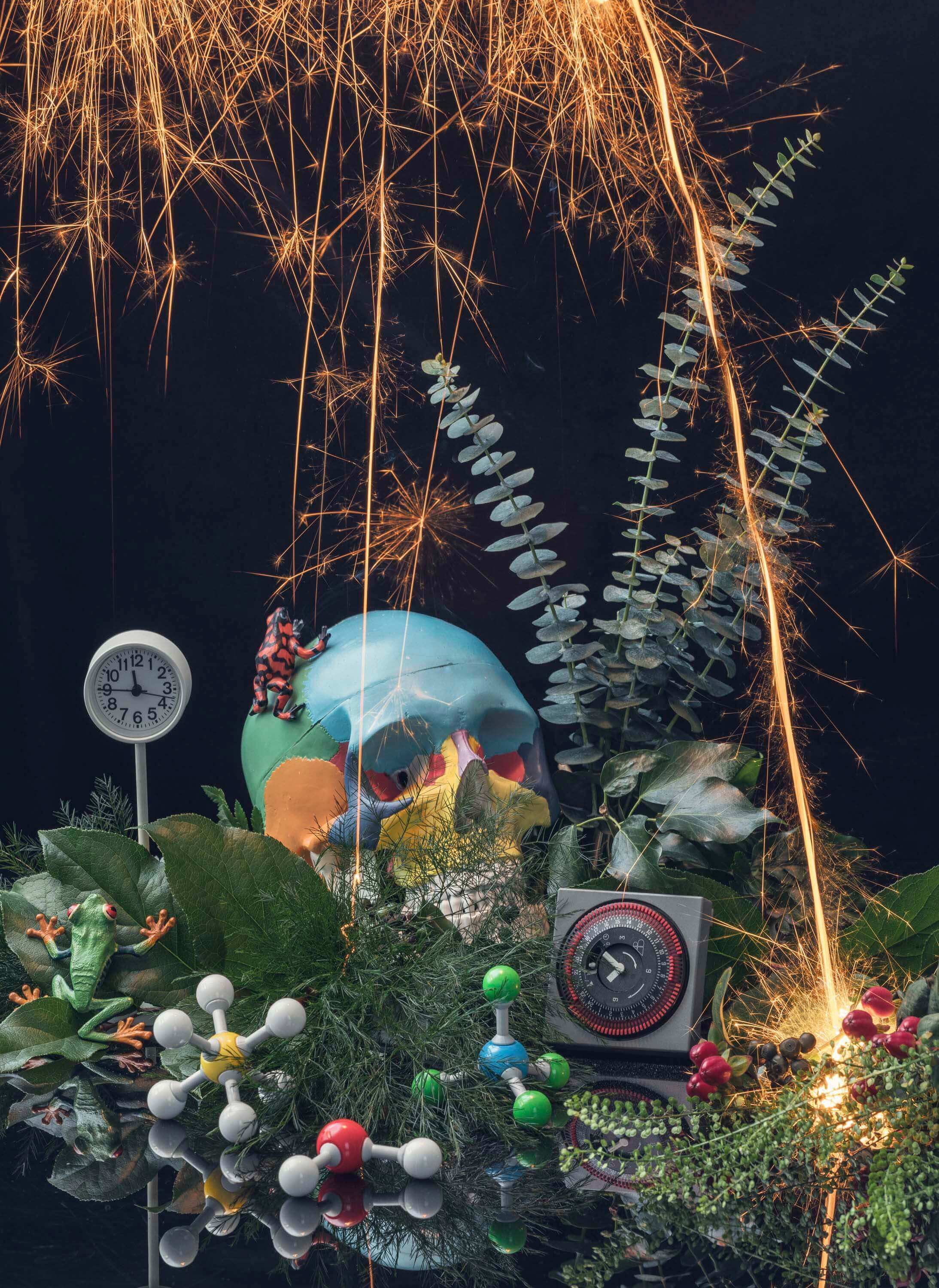“Something ‘untamed’ is something delicate, elaborate and elegant. The untamed mind has nothing to do with what is rough, boorish or violent. It is not pretentious, and not fashionable. Yet it is endlessly refined. In a word, this untamed wildness is noble,” says the exhibition director. “This elegant nobility is embedded in every form of life. Take a look at nature in its primary state. With perfect bodily structures and soft motions, even when engaged in predatory behaviour, its attacks too, are graceful,” he continues. “The same noble wildness exists in the human mind and brain. Or rather, it was this wildness that gave birth to both mind and brain.
A new-born, wild and untamed mind moves through the forest of brain neurons with the movements of a tiger. Human sensation and thought interrelate both actively and multidimensionally.
However, with the revolution in agriculture, untamed wildness has lost its liberty. Our sense submitted to the rule of aesthetic standards, and thought became dominated by rationality. Trends of civilization came to replace wild beauty, and untamed thinking subordinated itself to the ‘tamed mind’. It is the logic of domesticated animals. Senses and thoughts of the wild were pushed to the margins. We now realize we must retrieve these untamed senses and thoughts, and bring them back. We can discover ways of access. You need only be equipped with a certain ‘tact’, and then you will find it. But bear in mind ‘something wild’ is not fashionable, but it is elegant.”

These words provided our entrance to the Wild: Untamed Mind exhibition, held at 21_21 Design Sight in Tokyo last autumn. Philosopher and anthropologist Shinichi Nakazawa is the Exhibition Director. Nakazawa is known for fieldwork-based, interdisciplinary research into various places and times. Even in the contemporary age, which tends towards logic and reason, the perceptions of the “untamed mind” are not quite lost.
Gianluigi Ricuperati: How would you define the correct ways to identify “wild minds” across the planet? Would you please name three of them? One that’s very well known, one that’s dead and one that’s totally unknown but worth us all discovering?
Shinichi Nakazawa: Very well-known: A well-known case would be unconventionality or eccentricity. Being unconventional means being free of common sense. That naturally encourages the “untamed mind” to rise up within a person. I believe a means to foster such indiscretion is Zen. Dead: One of many possible examples from the dead is the “wisdom” found in ancient religion. However, such concepts can continue into the religions of today. Totally unknown but worth us all discovering: Thirdly, there was the intellectual operation the Ancient Greeks called “lemma”, as opposed to “logos”.
GR: I believe there’s such a thing as a “cross-disciplinary code” that works as a bridge-the-gap tool to connect different disciplines and mindsets. The only thing is that it’s not a tool but an ethos, a way of behaving. Do you agree?
SN: Tools are hardware. I believe the software connection between disciplines is more important. Yes, it’s possible to call these links an “ethos”. For hardware, we only have the computers that happen to exist at present. But new software can always be invented – although there will be a limit. An “ethos” uses tacit knowledge, so some kinds of ethos must be specific to particular cultures. This is a matter we shouldn’t ignore.
GR: To what extent did the work in curating the exhibition change your approach to the subject of the “Untamed Mind”? Did you discover new aspects? Did you find new questions?
SN: I found the planning team, participating creators and exhibition visitors all shared a similar awareness of the issues.

GR: Is there a particular field in which untamed minds are more encouraged these days ? Might this be technology?
SN: The field of art might be a case where further engagement of the untamed mind seems unnecessary – that is, we all assume artistic creation is based on the concept to start with. But take the world of business: it’s regarded as rational. Yet in reality, decisive and important business decisions can be made with the untamed mind. In science and technology, too, the untamed mind is essential. Having said that, science is a system that seeks to eliminate the untamed mind, so tremendously complicated procedures are needed to engage with it in the sciences. Still, in my opinion, many cutting-edge scientists fully realize how crucial the untamed mind is. This is even the case in, say, the field of quantum physics. Another example is design, where very often a good result, or form, comes from a combination of the practical and the unconventional. The untamed mind is essential for all of us.
GR: What’s the moral standing of the untamed mind? Is there an ethical limit to curiosity?
SN: In Western European thinking there’s a sense of “moral standing” that places the self, “I”, at the centre. But the untamed mind presupposes a lack of this “I”. Thus, a different notion of moral standing must arise. We haven’t yet recognized this, but it’s something we need to start thinking about. The lack of “I” means that this “I” becomes everything else. Some ethical limit will be generated by virtue of the understanding that “I am everything else”. If we replace notions of killing, hurting and violence, different ideas will be born, which will provide limits. For example, if some restrictions can be exerted on the destruction of nature, this will come directly from the untamed mind. It won’t be achieved by a ban on the artificial destruction of nature. So, based on the premise that no “I (self)” exists, a different code of ethics will emerge quite naturally.
GR: Would you agree about launching an Untamed Minds Academy? What’s your major concern about education today and in the future?
SN: I completely agree. I believe that what people need today is just such an Untamed Minds Academy. We should engage ourselves in outside fieldwork above all.
GR: Would you please list the five books which changed your intellectual practice, in the order of when you encountered them (i.e. as a child, a teenager, an adult, etc.)
SN: As a child: Journey to the West by Wu Cheng’en.
As a teenager: Mahayana Buddhism.
Others: Works by Kumagusu Minagata, Claude Lévi-Strauss, Longchen Rabjampa and Thomas Aquinas.